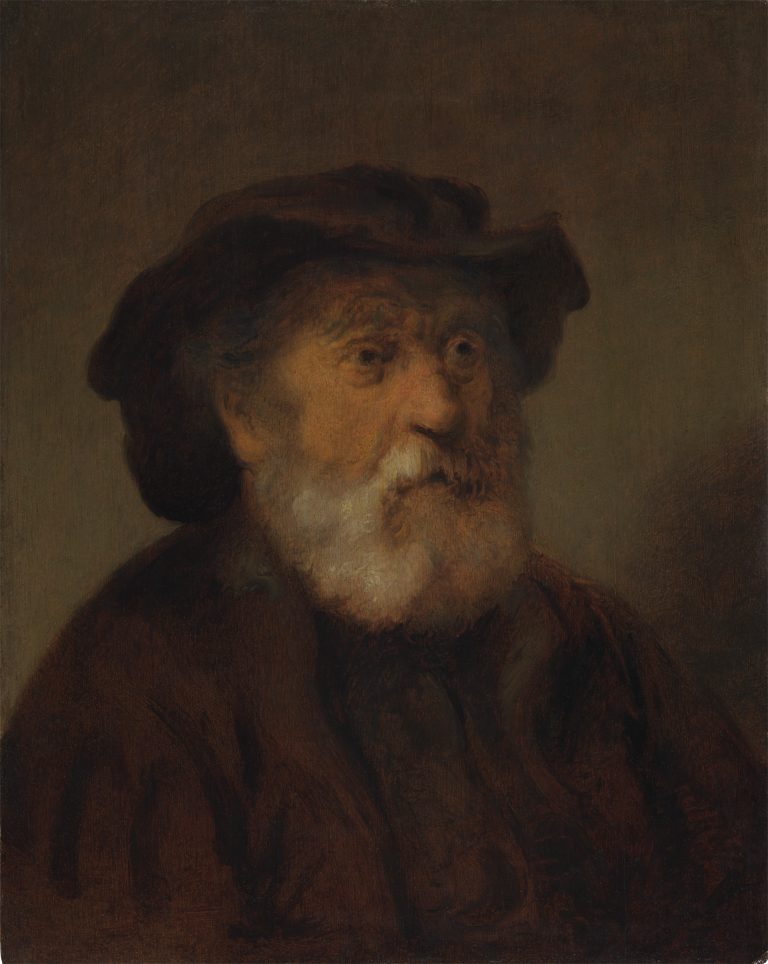This small panel of an old man with a white beard is a tronie, a genre of painting that emerged in the first half of the seventeenth century in the Northern Netherlands.1 Though based on living models, these bust-length figure paintings are not portraits but rather character studies.2 The models, whether old or young, often sport fanciful costumes and show lively facial expressions. Tronies were generally painted in a loose or sketchy manner, a handling that was contrary to the decorum generally expected from formal portraiture, but one that allowed artists to demonstrate the expressiveness of their brushwork.3 As such they were valued as demonstrations of painterly prowess, not only in the handling of materials and textures, but also in the rendering of the human face and its passions.4
The characteristics of the tronie are exhibited in exemplary fashion in this painting of a bearded old man turned slightly to the right. Light from the left strikes his face, creased by countless wrinkles, in such a way as to isolate the right eye, cheek, and part of the white beard against the surrounding darkness. The old man’s dress, consisting of a simple brown garment and a soft hat, identifies him as a person of low social position.5 The model stares off to the right with raised eyebrows and slightly opened mouth, appearing to react in surprise to something not seen by the viewer.6
The attribution of the Leiden Collection painting has been a matter of some dispute since it first appeared on the market in the early twentieth century. Hofstede de Groot, and later Valentiner, attributed it to Rembrandt van Rijn (1606–69).7 Von Wurzbach connected it to Gerbrand van den Eeckhout (1621–74),8 while Bauch thought that the artist could have been Adriaen van Ostade (1610–85).9 The closest comparisons to this work, however, are found in the paintings of Salomon Koninck (1609–56). Three of Koninck’s paintings feature a similar model with flowing white hair and beard, a strong nose with a pointed tip, and distinctively small eyes with puffy rounded eyelids.10 In each of these paintings the man is shown standing at a balustrade holding his gloves in his hand. The panel in The Hague (fig 1) is dated 1650, which is probably when all three of these works were painted.11 Although such tronies were valued as independent works of art for eventual sale on the open market, they were also used as preparation for finished paintings. Indeed, Koninck depicted the same model in a number of other guises, ranging from a scholar in his study to one of the elders in Susanna and the Elders.12
An attribution of the Leiden Collection painting to Koninck can only be tentatively proposed because the figure is more freely rendered than are those in his finished paintings or on other tronies attributed to him, although its sketchy appearance may indicate that the artist has here painted directly from the model.13 Nevertheless, this figure study does display the calm and methodical buildup and palette of muted colors that are characteristic of Koninck’s painting technique. The smooth, regular curves of the folds in the man’s costume resemble those seen in Koninck’s works, most specifically a loose head study by the artist now in Dresden (fig 2).14
